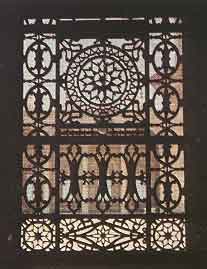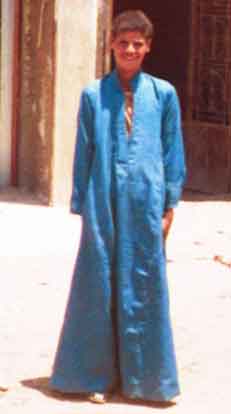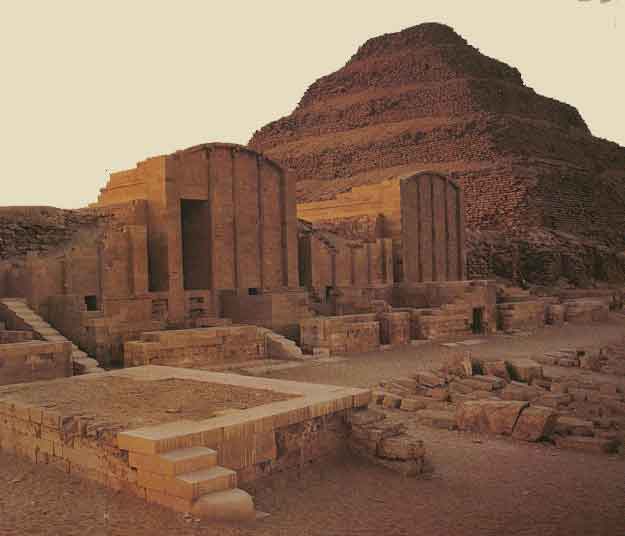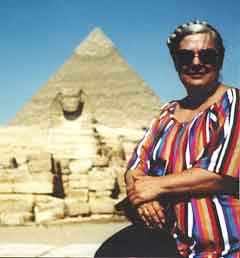

| Egypt |  |
|
CAIRO - Part 3 - Hospitality, Charm and Con Artists
 Egyptians are such masters at the art of hospitality, that. unless we are warned in advance, we will be stopping at every third shop in the business district of Cairo...for tea. The owner just wants to talk about America because he has a cousin in Chicago (they ail have cousins in Chicago, or Philadelphia, or
Cincinnati), and plans to emigrate to our country within the next three years, and in the meantime, is just SO
grateful for the opportunity to practice his English. He is just so warm and gracious, that, after thirty minutes of charming conversation, and, "really, we must go now" (and he wants us to have a second cup of tea), that, in order to get his permission to leave, we feel we just HAVE to buy something. It works every time. We buy.
Egyptians are such masters at the art of hospitality, that. unless we are warned in advance, we will be stopping at every third shop in the business district of Cairo...for tea. The owner just wants to talk about America because he has a cousin in Chicago (they ail have cousins in Chicago, or Philadelphia, or
Cincinnati), and plans to emigrate to our country within the next three years, and in the meantime, is just SO
grateful for the opportunity to practice his English. He is just so warm and gracious, that, after thirty minutes of charming conversation, and, "really, we must go now" (and he wants us to have a second cup of tea), that, in order to get his permission to leave, we feel we just HAVE to buy something. It works every time. We buy.This talent is probably in their DNA, but they also start perfecting it at a very early age. At every tourist attraction, you will find hordes of children, ages from about ten or twelve to sixteen, or so, selling postcards (ten for a dollar), or papyrus pictures, or something. Their beautiful, smiling faces belie the fact they are desperate to make a sale. The problem is this: we are taught in our culture to look a person in the face, smile, and politely say "no thank you", which does not work in Egypt. There, if you do that, it gives them license to continue pleading with you, following you across the plaza or down the street, and this is a sign to every other kid in the area "we have a live one here". What may have started with two or three children, soon will mushroom into fifteen or twenty. Outside one mosque, I witnessed one elderly Americans couple, surrounded by at least fifty children and looking very frightened. In order to avoid such a situation, the wise tourist looks straight ahead, or up at a minaret, continues to walk or stroll, pretending to be completely oblivious to that kid, no matter how handsome, no matter how much you want his picture. One must take the attitude that kid doesn't even exist, even if your waiting bus is only thirty feet away. 
At the little town of Kredessa, near the pyramids, I encountered a twelve year old boy named Ali who saw I had a pencil. He followed me, begging and pleading for that pencil, as I headed for the bus. He was wearing a lovely blue robe, and he was so very beautiful After about twenty minutes, I made a bargain with him to take his picture in exchange for the pencil. He had worked so hard, begging for that pencil but, I felt he had to know I was going to have something from him, in exchange...the picture! At Saqqara, a beautiful Egyptian man latched on to Bob and me, wanting to be our guide and followed us everywhere, giving us the same information as was in our guide book. Although we kept telling him we didn't want nor need a tour guide, he kept insisting we could pay him anything. Bob finally said "we don't want a guide but I'll give you a dollar it you will just leave us a  lone" and the man was outraged because it wasn't enough. We went into the tomb of Unis which was free (having paid to get into the general area) but we had to pay a man at the door fifteen cents just to get back out of the tomb. On that same trip, we had contracted with the cab driver (through Bechtel) to drive us around for the day for fifteen dollars. But, back at the hotel, he insisted we owed him fifteen dollars per person, for a total of thirty. Fortunately, Bob had been told by fellow workers that a cab for a day was only fifteen no matter how many people you had in your party, and
refused to give him more. But the driver's insistence that we were wrong, sure put a damper on the day. lone" and the man was outraged because it wasn't enough. We went into the tomb of Unis which was free (having paid to get into the general area) but we had to pay a man at the door fifteen cents just to get back out of the tomb. On that same trip, we had contracted with the cab driver (through Bechtel) to drive us around for the day for fifteen dollars. But, back at the hotel, he insisted we owed him fifteen dollars per person, for a total of thirty. Fortunately, Bob had been told by fellow workers that a cab for a day was only fifteen no matter how many people you had in your party, and
refused to give him more. But the driver's insistence that we were wrong, sure put a damper on the day.The Cairo Museum of Antiquities was only about three blocks from our hotel, and one day, Margo (another Bechtel wife) and I walked over to spend the morning there. It was three dollars to get in and while we were there, we discovered why the guide book said we shouldn't talk to the guards. One of them came over to us and insisted we come with him, as he had something to show us that not everyone gets to see. He secretively took us into another room, pulled open a wall partition and told us to look inside. We peeked through a half inch crack into the next room, a darkened room, filled with crates and then he wanted money for the privilege of our seeing nothing. We felt so stupid we laughed out loud and paid him nothing. In retrospect, we probably should have paid him something for the laugh we got out of the experience.  During our stay in Cairo, I visited the pyramids at Giza three times, and had become quite inured to those very annoying hustlers. So, as I stood, contemplating the
sphinx one day, one of them approached me and wouldn't go away, even though I ignored him for several minutes. Finally, without looking at him, I closed my eyes, tilted my face to the sky, took a deep breath and with obvious exasperation, through gritted teeth, I said: "I have come halfway around the world to communicate with the
sphinx and YOU are preventing me from doing that. Now, would you PLEASE go away." Then, to emphasize my point, I
turned and glared at him. I found myself staring into the wisest eyes and the most beautiful face I have ever seen in my life. He was an elderly gentleman with one of those faces you see in National Geographic. A face that could melt the
meanest heart. A face with dignity, compassion and love. To this day, sixteen years later, I am still haunted by that face. How I wish I had changed my stance, taken his picture and given him a dollar.
During our stay in Cairo, I visited the pyramids at Giza three times, and had become quite inured to those very annoying hustlers. So, as I stood, contemplating the
sphinx one day, one of them approached me and wouldn't go away, even though I ignored him for several minutes. Finally, without looking at him, I closed my eyes, tilted my face to the sky, took a deep breath and with obvious exasperation, through gritted teeth, I said: "I have come halfway around the world to communicate with the
sphinx and YOU are preventing me from doing that. Now, would you PLEASE go away." Then, to emphasize my point, I
turned and glared at him. I found myself staring into the wisest eyes and the most beautiful face I have ever seen in my life. He was an elderly gentleman with one of those faces you see in National Geographic. A face that could melt the
meanest heart. A face with dignity, compassion and love. To this day, sixteen years later, I am still haunted by that face. How I wish I had changed my stance, taken his picture and given him a dollar.
CAIRO - Part 4 - Getting Around Continued on: |